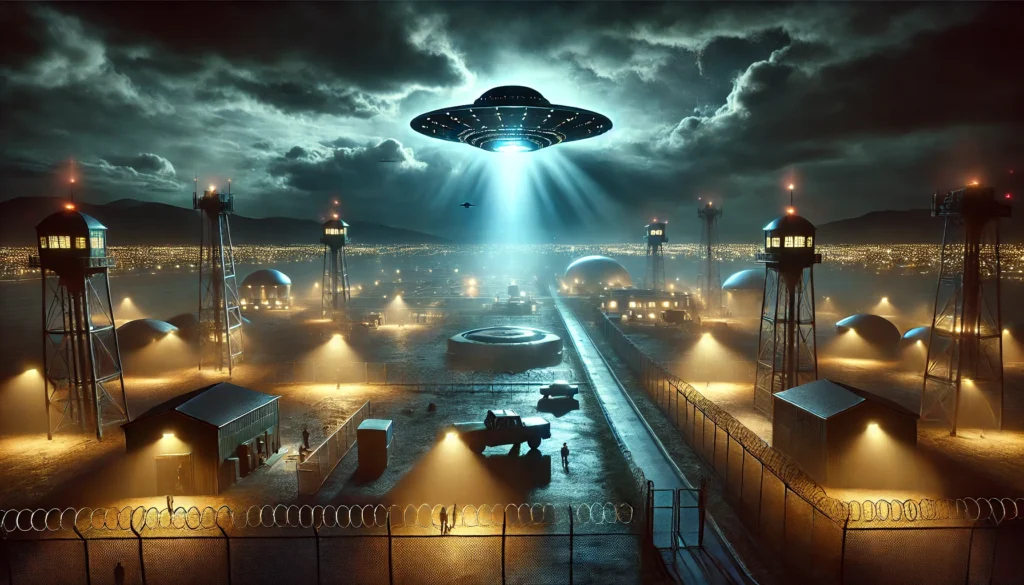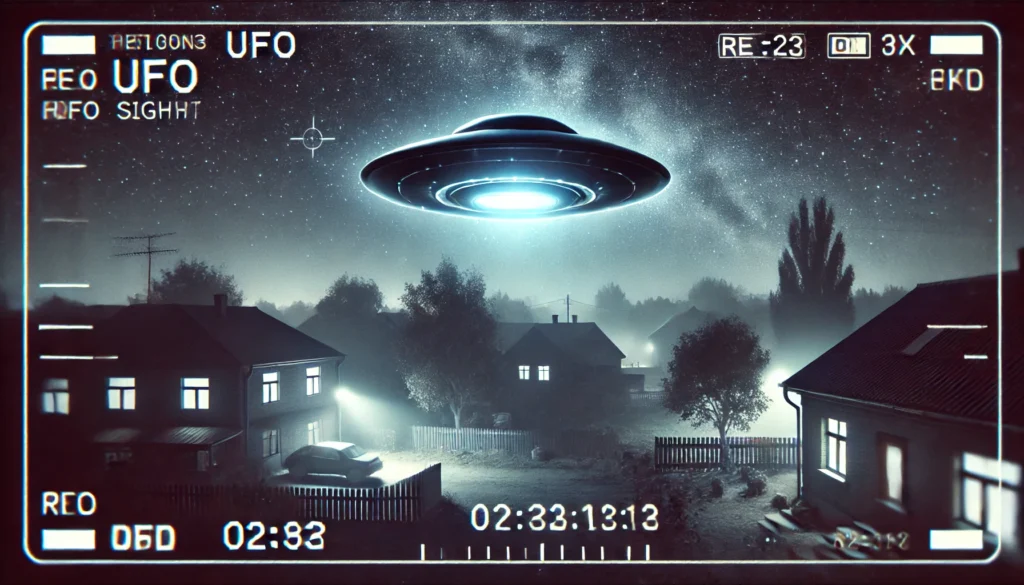
Unidentified Aerial Phenomena (UAPs), commonly referred to as UFOs, have been a subject of intrigue and speculation for decades. However, recent reports from both military sources and civilians are shining new light on an intriguing pattern: these strange aerial objects seem to be increasingly drawn to sensitive locations, particularly military and nuclear facilities. The phenomenon has sparked a range of theories about their purpose and origins, with many wondering whether these mysterious visitors might have an interest in humanity’s most dangerous technology—nuclear weapons and power plants.
Recent UAP Sightings and Increased Activity
Reports of UAPs are becoming more frequent, especially in areas of high security. For example, a CBS News article recently highlighted ongoing sightings of drones and unidentified objects near U.S. military bases and facilities, including those in the United Kingdom. The sightings have become a source of growing concern among military personnel, with many speculating that the UAPs are monitoring sensitive sites, such as missile silos and nuclear arsenals. According to military insiders, these objects are capable of executing maneuvers that defy known physics, including sudden accelerations and rapid altitude changes, leaving many to wonder whether these craft are of earthly origin or something else entirely.
This uptick in UAP activity near military and nuclear facilities aligns with a pattern that has been observed for decades. Historically, these phenomena seem particularly attracted to locations involving nuclear technology. In one notable case from 1967, the U.S. Air Force witnessed a UFO hovering near a missile silo at Malmstrom Air Force Base in Montana, shortly before a series of nuclear warheads inexplicably went offline. Could these encounters be linked to humanity’s control over nuclear weapons? The questions only deepen as new sightings continue to emerge.
In a more recent example, the Daily Mail reported on mysterious lights seen over Capitol Hill in Washington, D.C. These lights sparked speculation that they could be related to UFOs, adding to the growing body of evidence suggesting that these phenomena may be more frequent and widespread than previously believed. While these lights may not have been directly linked to any nuclear facilities, their proximity to the heart of U.S. government operations, including the Pentagon and various national security sites, raises further concerns about the potential connection between UAP activity and sensitive infrastructure.
The Historical Link Between UAPs and Nuclear Technology
The connection between UAPs and nuclear sites dates back to some of the earliest and most dramatic UFO encounters. In 1957, UFOs were reportedly seen hovering over the White Sands Proving Ground during a nuclear weapons test in New Mexico, with witnesses describing the objects as performing aerial maneuvers beyond the capabilities of any known aircraft. This event was one of several sightings near nuclear testing sites during the Cold War, with many military personnel reporting similar encounters, particularly at sites involved in the development and testing of atomic bombs.
Perhaps the most infamous case is the 1967 Malmstrom Air Force Base incident in Montana, where UFOs were seen near nuclear missile silos, and several missiles were mysteriously deactivated in the presence of these objects. The link between these unexplained aerial phenomena and the malfunctioning of nuclear weapons raised serious questions at the time—questions that continue to haunt researchers today. Were the UAPs simply observing the missiles, or was there a more deliberate interference in play?
The 1980 Rendlesham Forest incident in the UK, often dubbed “Britain’s Roswell,” is another noteworthy event in this historical pattern. U.S. Air Force personnel stationed at RAF Woodbridge near a nuclear storage facility reported witnessing strange lights and a craft that appeared to land in the nearby forest. The witnesses described the craft as being capable of hovering silently and performing impossible maneuvers, further strengthening the theory that UAPs may be monitoring or interacting with military and nuclear sites.
Why Nuclear Sites?
Given this history of UAPs showing a curious interest in nuclear sites, several theories have emerged to explain why these locations seem to attract mysterious visitors.
- Monitoring of Nuclear Weapons: One common theory suggests that extraterrestrial or interdimensional entities may be observing humanity’s use and development of nuclear weapons. Considering the destructive potential of nuclear arms, it’s plausible that advanced civilizations—or even non-human entities—might have a vested interest in ensuring that such technology does not lead to humanity’s self-destruction.
- Energy Sources: Another theory posits that UAPs could be drawn to nuclear power due to the immense energy produced by reactors and nuclear weapons. These craft might be utilizing the nuclear energy for unknown purposes, or they may simply be attracted to high concentrations of energy. After all, the power generated by nuclear reactors far exceeds that of conventional energy sources, making it an ideal point of interest for entities that require vast amounts of energy.
- Surveillance and Prevention: A more speculative theory suggests that UAPs might be sentient machines or autonomous entities programmed to monitor human behavior, particularly in relation to our nuclear capabilities. These UAPs could be observing humanity’s potential for self-destruction, taking action to prevent nuclear war or even interfering with weapons systems to maintain a fragile peace.

The Washington, D.C. Sightings: A New Dimension?
The more recent sightings of strange lights over Washington, D.C., as reported by The Daily Mail, add another layer to the mystery. On Capitol Hill, unusual lights sparked fears that UFOs were once again making their presence felt over a major political and governmental hub. The location of these sightings, near vital government institutions such as the Capitol and the Pentagon, raises new questions about the role UAPs might play in surveilling or interacting with key global powers. Although the lights seen over D.C. might not be directly linked to nuclear technology, their proximity to Washington’s national security infrastructure suggests that these phenomena are not merely random, but rather drawn to places of great power.
This recent spike in sightings over government centers, combined with the long-standing pattern of UAPs near nuclear sites, implies a more deliberate interest in humanity’s strategic assets. It raises the possibility that UAPs could be observing or even influencing global politics, particularly around sensitive topics like nuclear arms control and defense systems.
Conclusion: The Unanswered Questions
The growing frequency of UAP sightings near military and nuclear facilities—combined with new reports from locations like Capitol Hill—has only deepened the mystery surrounding these phenomena. While theories abound, ranging from extraterrestrial observation to advanced human technology, no definitive answers have emerged. The link between UAPs and nuclear technology, however, cannot be ignored, and it remains a crucial aspect of the larger enigma.
As governments around the world continue to investigate UAPs and declassify information, it’s clear that the story is far from over. The increasing number of sightings suggests that UAPs are more than just a curiosity—they may be actively monitoring or engaging with the most powerful and dangerous aspects of human civilization. Until we have a clear understanding of what these objects truly are and what their presence means, the questions surrounding UAPs, particularly near nuclear sites, will remain a source of fascination—and perhaps even concern—for years to come.




